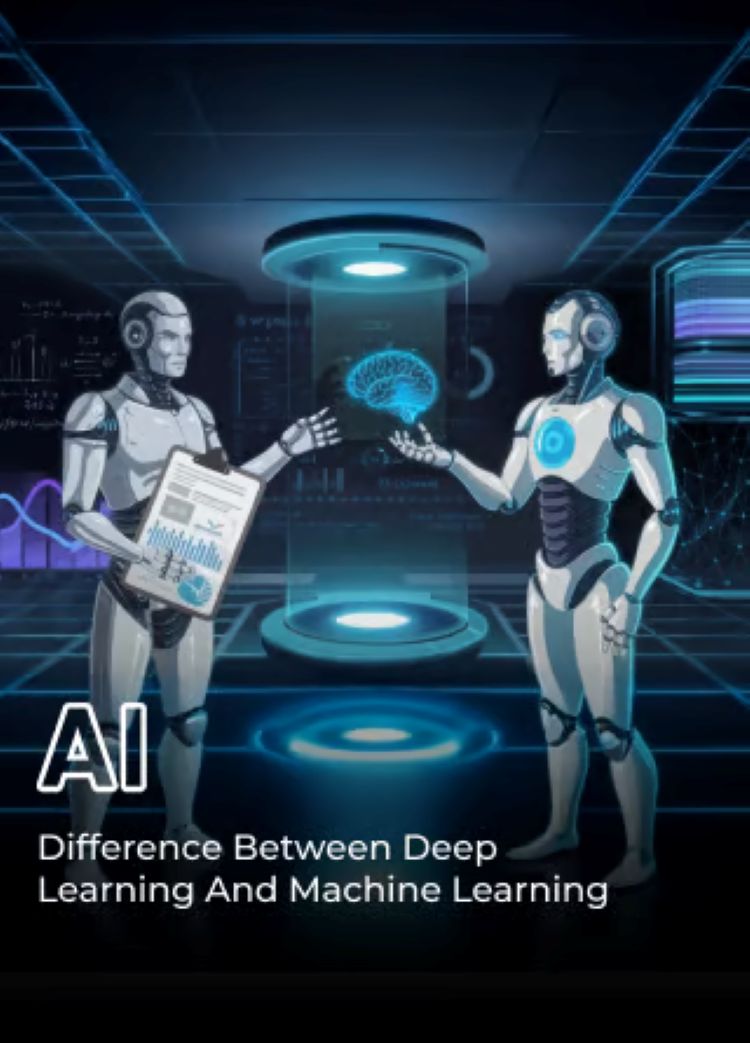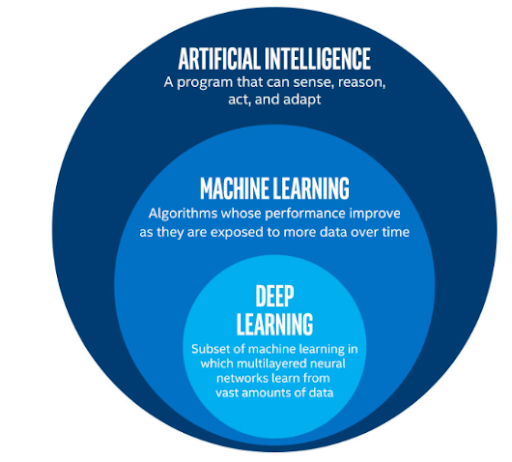Have you ever watched the TV series, Movies Called Black Mirror?
That shows where futuristic technology feels eerily close to reality—sometimes exciting, sometimes downright terrifying.
Take the episode “Nosedive” for example. It shows a world where everything revolves around ratings, powered by simple predictive systems. It is kind of like Machine Learning (ML) today—the algorithm sticks to rules and uses patterns to make predictions but with a much more significant impact on people’s lives.
Now, contrast that with “White Christmas”, where Artificial Intelligence (AI) and Deep Learning (DL) creates complex, simulated worlds and learns from every interaction— this time the algorithm is powerful, intuitive and almost human-like in its decisions.
What a turnaround, right?
Now, explaining AI to someone who’s not tech-savvy can be a mix of fun and frustration. (Seriously, try talking about neural networks with a ten-year-old — you may have to dip into a hit of Star Wars and Harry Potter to make the right analogies!)
Then think of how challenging it would be to get into the explanation of Machine Learning and Deep Learning, two of the biggest buzzwords in the world of AI. While they both steal the show, they do very different things!
Think of it this way: businesses, researchers and developers depend on ML like a trusty gadget that helps predict trends and automate tasks. On the other hand, DL steps in to save the day when it’s time to do the hard work, like decoding a strange language or making self-driving cars work.
Oh and here’s a fun stat: according to a report by Statista, the global AI market is projected to hit $184 billion by the end of 2024 and keep growing to a mind-blowing $826.7 billion by 2030. That’s a lot of zeros!
AI is clearly not just science fiction anymore—it’s becoming part of everything we do.
So, before we jump into how DL is different from ML (and why it matters!), let’s first break down what these two actually are and why they’re such game-changers!
Let’s Define Machine Learning (ML)!
Machine Learning (ML) is a branch of Artificial Intelligence (AI) that focuses on helping machines learn from data – hence the name! You see, ML systems are not programmed with specific directions. Instead, they use algorithms to look for patterns in the data they receive and decide what to do next. Think about how you teach a dog new tricks, once is not enough. You have to show it multiple times for it to learn – it’s the same with machines!
Machine learning is all about making guesses or choices without being told to do so. Here are some key concepts:
- Algorithms: Algorithms are the rules or steps that are applied to learn from data.
- Training Data: This data is used to teach the ML model initially, so it can do better when there is more information later.
- Model: This is the core of the ML system, which makes predictions or decisions based on new data.
There are several popular algorithms in ML, including:
- Linear Regression: This is used for predicting a continuous value.
- Decision Trees: This model helps in making step-by-step decisions based on a series of questions.
- Support Vector Machines: Great for classification tasks.
Machine learning is everywhere! Here are some industries where ML is making waves:
- Healthcare: For predictive analytics in patient care.
- Finance: Used in fraud detection to keep your money safe.
- Retail: Helps in customer segmentation to target the right audience.
Now, let’s learn about deep learning and how it builds on these ideas to solve even more difficult problems. Read on!
Defining Deep Learning
A unique application of machine learning is deep learning – think of it as the superhero version of machine learning. Deep learning is better than machine learning at many things as it uses neural networks inspired by how our brains work, allowing it to learn from data in a more complex and powerful way.
Neural networks are like a web of little people who make little decisions. They get information, process it and then guess what will happen. It’s easy to understand how they work whne broken down like this:
- Input Layer: This is where the information comes in.
- Hidden Layers: These layers do the heavy lifting to analyze the data and find patterns.
- Output Layer: This is where the final decision or prediction comes out.
Now deep learning has some cool architectures that help it shine in different areas. Here’s a quick look:
| Architecture Type | Best For |
|---|---|
| Convolutional Neural Networks | Image recognition and processing |
| Recurrent Neural Networks | Sequence data like text or speech |
| Transformers | Natural language processing |
These architectures allow deep learning to tackle complex tasks. For example, CNNs are like the detectives of the digital world, spotting details in images. Meanwhile, RNNs are great at understanding sequences, like how a story unfolds.
Now, let’s get to the meat of the matter and examine the differences between machine learning and deep learning!
Key Differences Between Machine Learning (ML) And Deep Learning (DL)
When it comes to ML, we can use machine learning benchmarks but DL is not the same in some very important aspects. Here’s an insightful breakdown:
| Aspect | Machine Learning (ML) | Deep Learning (DL) |
| Data Requirements | Smaller datasets; suitable for limited or structured data | Large datasets; thrive on unstructured data like images and videos |
| Feature Engineering | Manual feature extraction; relies on domain expertise | Automatic feature extraction using layers of neural networks |
| Computational Resources | Lower computational demands; works on standard hardware | High computational demands; require GPUs or TPUs |
| Performance | Good for basic or structured tasks like classification and regression | Handles complex tasks like image recognition and language processing |
| Learning Style | Guided learning; algorithms focus on pre-defined patterns | Autonomous learning; builds hierarchical representations of data |
| Common Use Cases | Fraud detection, customer segmentation, predictive analytics | Self-driving cars, voice assistants, medical image analysis |
This comparison should give you a clear and detailed understanding of how ML and DL differ in terms of their capabilities, advantages and applications. Choose wiself, friends!
Now that we’ve understood the key differences between ML and DL, we also need to known where each of these nifty technologies truly shines. After all, both ML and DL are shaping industries in unique and impactful ways!
Here are some real-world applications for you to explore to see first-hand how they’re revolutionizing the way we live and work!
Use Cases And Applications Of Machine Learning And Deep Learning
Both ML and DL have carved out their niches. Think of ML as the reliable sidekick, while DL is the superhero that swoops in for the bigger challenges. Here’s all you need to know:
Machine Learning
- Predictive Analytics: Businesses use Machine Learning to forecast everything from sales to customer trends.
- Fraud Detection: Banks employ ML algorithms to spot unusual transactions and McKinsey has found that using ML-based fraud detection can reduce fraud by up to 50%.
- Customer Segmentation: Companies analyze customer data to tailor their marketing strategies to effectively target the right audience with the right outreach.
Deep Learning
- Autonomous Vehicles: Self-driving cars heavily rely on deep learning to interpret data from sensors and cameras.
- Natural Language Processing: DL powers our favorite voice assistants like Siri and Alexa, helping them understand and respond to human speech.
- Medical Image Analysis: Medical professionals use DL to analyze X-rays, MRIs, etc., to improve the accuracy of diagnosis with studies from Nature.com show that DL can outperform human radiologists in some cases!
You can say that both ML and DL have their good and bad points. A lot of the time, machine learning needs feature engineering, which means that people have to choose the right data features. DL, on the other hand, can easily pull out features but it needs more computing power.
Both these AI technologies can help you make smart choices – but when should you use ML and when is DL more suitable?
We’ll, let’s talk about how to pick one of these methods over the other!
Choosing Between Machine Learning And Deep Learning
When it comes to picking between ML and DL, it’s a bit like choosing between a bicycle and a sports car. Both can get you where you want to go but they do it in very different ways.
Here’s a quick list of the factors to consider:
- Data Availability: If you are working with a relatively small amount of data, ML might be the best choice. Deep Learning, on the other hand, does very well with large amounts of data.
- Computational Resources: ML is like a compact car; it doesn’t need much fuel to run. DL, however, is more like a rocket ship. Make sure you have the right tools because it needs a lot of processing power.
- Project Complexity: ML can suffice for simpler tasks but DL is the best way to solve harder problems. Think of it as solving a ten-piece puzzle versus solving a Rubik’s Cube!
To help you think about these factors, here are some questions you must ask:
- Assessing Your Data: Look at what data you have and if it’s limited, stick with ML.
- Evaluating Your Resources: Check your technology stack and assess if it can handle the heavier workload of Deep Learning?
- Defining Your Goals: Think about what you want to achieve. If it’s a simple jobs, pick ML. A more complex goal, use DL.
Picking the right method is very important because it can separate a project that works and one that doesn’t.
Finally, whether you should use ML or DL depends on your data, your resources and how hard the job is. Getting the right tool for the job is step one to helping you succeed!
Wrapping It Up!
So, we’re sure you now know what “deep learning” and “machine learning’ stand for. They may sound like fancy tech terms but they’re just different ways for computers to learn and decide what to do. That smart kid in class who works hard at school and learns from books is machine learning. The offbeat kid who learns by doing projects and trying new things is deep learning.
They both have their advantages and drawbacks but can work together to get things done. You no longer have to nod along when someone talks about AI – you’ve become an expert in the differences between ML and DL!
Frequently Asked Questions
What Is The Main Difference Between Machine Learning And Deep Learning?
The main difference is that machine learning uses simpler algorithms to learn from data, while deep learning uses complex structures called neural networks to learn from larger amounts of data.
Can I Use Machine Learning For Big Data Projects?
Yes, you can use machine learning for big data but deep learning is usually better for very large datasets because it can more effectively find patterns.
Do I Need A Lot Of Data To Use Deep Learning?
Yes, deep learning usually needs a lot of data to work well. It learns better when it has more examples to study.




